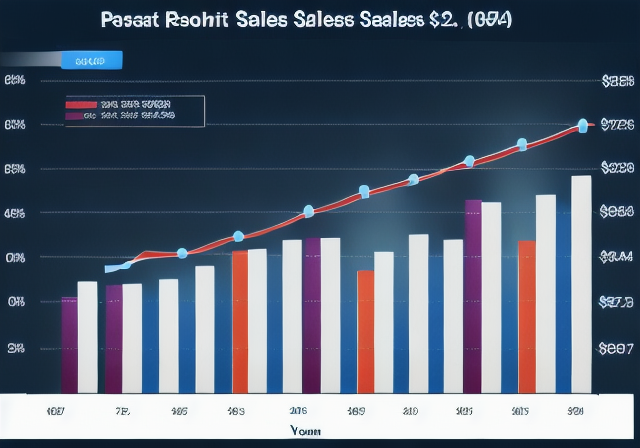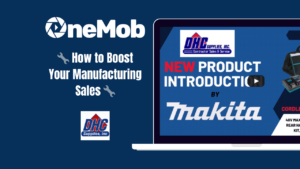Understanding Sales Revenue
Sales revenue is the income generated by a business from selling its products or services. It is an essential metric for any business, as it determines the financial health and growth potential of the company. The higher the sales revenue, the more profitable the business becomes, making it a critical factor in determining the success of any organization.
Tracking sales revenue is vital for any business as it helps in measuring the effectiveness of the sales strategy. By analyzing sales revenue, businesses can identify which products or services are generating the most revenue, and adjust their marketing and sales strategies accordingly. There are several key metrics to track for sales revenue, including customer acquisition cost, customer lifetime value, gross margin, and net profit margin.
Key Metrics to Track for Sales Revenue
Customer acquisition cost (CAC) is the cost incurred by a business to acquire a new customer. It is calculated by dividing the total cost of sales and marketing efforts by the number of new customers acquired during the same period. A lower CAC indicates that a business is acquiring customers efficiently, making it a critical metric to track for sales revenue.
Customer lifetime value (CLTV) is the total revenue a customer generates for a business over the course of their relationship. It is a crucial metric to track for sales revenue as it helps businesses identify their most valuable customers and develop strategies to retain them.
Gross margin is the difference between revenue generated from sales and the cost of goods sold. It is a key metric to track for sales revenue as it helps businesses determine the profitability of their products or services.
Net profit margin is the percentage of revenue remaining after all expenses, including taxes and interest, have been deducted. It is an essential metric to track for sales revenue as it helps businesses determine their profitability after all costs have been incurred.
How Sales Revenue Impacts Your Business
Sales revenue impacts a business in several ways. A higher sales revenue translates to increased profitability, allowing businesses to invest in research and development, marketing, and expansion. It also provides businesses with the financial resources to hire new employees, upgrade their technology, and improve their infrastructure.
Conversely, a lower sales revenue can have a detrimental effect on a business. It can lead to a decrease in profitability, making it challenging to invest in growth opportunities, and may require businesses to reduce their workforce or cut back on expenses. Tracking sales revenue is crucial for businesses to identify trends and make informed decisions that can impact their bottom line.

Optimizing Your Sales Funnel
Breaking down the sales funnel is the first step to optimizing it. The sales funnel consists of four stages: Awareness, Interest, Decision, and Action. In the Awareness stage, potential customers become aware of your product or service. In the Interest stage, they show interest in your offering. In the Decision stage, they make a decision to purchase or not. Finally, in the Action stage, they take action by purchasing your product or service.
Identifying areas for improvement is critical to optimizing your sales funnel. One common area for improvement is the conversion rate at each stage. To improve the conversion rate, it’s essential to analyze the data and identify the reasons why customers are not converting. Another area for improvement is the time it takes to move through the sales funnel. To speed up the process, you can use tools and technologies to automate and streamline the sales funnel.
Best Practices for Optimizing Each Stage
Awareness: To optimize the Awareness stage, it’s crucial to create a strong brand presence and increase your visibility. You can achieve this by leveraging social media platforms, content marketing, and advertising. Use eye-catching images and videos to grab the attention of potential customers.
Interest: To optimize the Interest stage, it’s essential to provide potential customers with valuable information about your product or service. Use case studies, whitepapers, and blog articles to demonstrate the value of your offering. You can also use lead magnets such as free trials or demos to generate interest.
Decision: To optimize the Decision stage, it’s critical to address any objections potential customers may have. Provide detailed product descriptions, customer reviews, and testimonials to build trust and credibility. You can also use retargeting ads to remind potential customers of your offering.
Action: To optimize the Action stage, it’s essential to make the purchase process as smooth and straightforward as possible. Use a clear and concise call-to-action (CTA) and provide multiple payment options. You can also use email marketing to follow up with customers and encourage repeat business.
Tools and Technologies to Streamline Your Sales Funnel
Using tools and technologies can help you streamline and automate your sales funnel. Customer relationship management (CRM) software helps you manage leads and track customer interactions. Marketing automation software enables you to create targeted campaigns and track customer behavior. Sales analytics tools provide insights into your sales funnel’s performance and identify areas for improvement.
Another tool to consider is a sales engagement platform like OneMob. OneMob empowers sales teams to create personalized and engaging microsites that drive customer interactions. With OneMob, you can create custom landing pages, video emails, and personalized videos that stand out and generate remarkable customer responses.

Optimizing your sales funnel is critical to maximizing sales revenue. By breaking down the sales funnel, identifying areas for improvement, and using best practices and tools to optimize each stage, you can improve your conversion rates, speed up the sales process, and increase revenue.

Maximizing Customer Lifetime Value
Customer Lifetime Value (CLTV) is one of the most critical metrics for any business since it represents the total amount of revenue a customer will generate throughout their relationship with a company. The higher the CLTV, the more valuable the customer is to the business. Maximizing CLTV is vital for long-term success, as it can help to increase revenue, drive customer loyalty, and boost profits.
The Importance of Customer Lifetime Value
Understanding the value of each customer over their lifetime can help businesses make data-driven decisions about how to allocate resources and customer support. By focusing on high-value customers, businesses can prioritize their efforts and resources to deliver a personalized and exceptional customer experience that keeps them coming back for more, increasing their lifetime value.
Strategies for Increasing Customer Lifetime Value
There are several strategies that businesses can use to increase CLTV. One of the most effective ways is to offer personalized recommendations and promotions to customers based on their past purchases and behaviors. This can help to create a sense of loyalty and encourage repeat business. Another strategy is to provide exceptional customer service, which can help to build trust and foster long-term relationships with customers.
Businesses can also consider implementing loyalty programs, cross-selling and upselling techniques, and even offering subscription-based services to encourage ongoing revenue streams. By providing value to customers beyond their initial purchase, businesses can increase CLTV and create a sustainable revenue stream.
How to Identify High-Value Customers
Identifying high-value customers is essential for maximizing CLTV. Businesses can use various metrics to determine which customers are most valuable, including purchase frequency, average order value, and customer lifetime value. By analyzing this data, businesses can identify their most loyal and profitable customers and tailor their marketing efforts and promotions accordingly.
Another way to identify high-value customers is by analyzing their engagement with your business, such as their interactions with your website, social media, and customer support channels. Customers who engage the most with your business are more likely to become loyal and valuable customers over time.
Nurturing Customer Relationships for Long-Term Success
Nurturing customer relationships is crucial for long-term success. Building trust, providing exceptional customer service, and creating a personalized experience for every customer are all key factors in fostering long-term relationships. Businesses can also use customer feedback and insights to improve their products and services continually, ensuring that they meet the evolving needs of their customers.
Ultimately, maximizing CLTV requires a customer-centric approach that prioritizes the needs and preferences of the customer. By delivering exceptional value and personalized experiences, businesses can increase CLTV, drive customer loyalty, and achieve sustainable long-term success.

As always, remember that customer lifetime value is just one of many metrics that businesses should consider when evaluating their performance. However, by focusing on maximizing CLTV, businesses can create a sustainable revenue stream while building long-term customer relationships that drive success.
Boosting Sales through Effective Marketing
Marketing plays a critical role in maximizing sales revenue. It is through effective marketing strategies that businesses can generate leads, build brand awareness, and create long-term customer relationships. A well-planned and executed marketing plan can significantly boost sales conversion rates, leading to increased revenue and profitability.
Proven Marketing Strategies for Boosting Sales
One of the most effective marketing strategies for boosting sales is to create a sense of urgency. By creating a limited-time offer or a deadline for a promotion, businesses can encourage customers to act quickly and make a purchase. Another proven strategy is to offer social proof. By displaying customer reviews and testimonials, businesses can build trust and credibility, ultimately leading to increased sales.
In addition, businesses can leverage the power of email marketing to boost sales. Email marketing campaigns can help nurture leads, promote new products, and provide exclusive offers to subscribers. By segmenting the email list and personalizing the content, businesses can increase open rates and click-through rates, ultimately leading to increased sales.
Creating a Comprehensive Marketing Plan
Creating a comprehensive marketing plan is essential for maximizing sales revenue. A well-planned marketing strategy should include a clear understanding of the target audience, the marketing channels to be used, and the metrics for measuring success. By identifying the target audience and understanding their needs and preferences, businesses can tailor their marketing efforts to effectively reach and convert potential customers.
It is also essential to select the right marketing channels to reach the target audience. This could include social media advertising, email marketing, content marketing, or a combination of strategies. To ensure the effectiveness of the marketing plan, it is crucial to set specific, measurable goals and track the progress towards achieving them.
Measuring the Effectiveness of Your Marketing Efforts
Measuring the effectiveness of marketing efforts is crucial for identifying what is working and what needs improvement. By tracking key metrics such as website traffic, conversion rates, and customer engagement, businesses can gain valuable insights into the effectiveness of their marketing campaigns. This information can be used to make data-driven decisions and optimize future marketing efforts for maximum impact.
In conclusion, effective marketing strategies play a critical role in maximizing sales revenue. By creating a comprehensive marketing plan, including proven marketing strategies, and measuring the effectiveness of marketing efforts, businesses can boost sales conversion rates, increase revenue, and achieve long-term success.

According to a study by the Direct Marketing Association, email marketing has an average return on investment of 3800%. This means that for every $1 spent on email marketing, businesses can expect an average return of $38. In addition, segmented email campaigns can result in a 760% increase in revenue. These statistics highlight the importance of email marketing for boosting sales and increasing revenue.
- By creating a sense of urgency and offering social proof, businesses can encourage customers to act quickly and make a purchase.
- Email marketing campaigns can help nurture leads, promote new products, and provide exclusive offers to subscribers.
- A comprehensive marketing plan should include a clear understanding of the target audience, the marketing channels to be used, and the metrics for measuring success.
- Measuring key metrics such as website traffic, conversion rates, and customer engagement is crucial for optimizing future marketing efforts.
Leveraging Data and Analytics to Maximize Sales Revenue Growth
When it comes to maximizing sales revenue growth, data and analytics can be powerful tools for businesses of all sizes. By leveraging the insights provided by data analysis, companies can make informed decisions and develop effective sales strategies that drive revenue growth.
Key Metrics and KPIs to Track
Tracking key metrics and KPIs is essential for understanding the health of your sales pipeline and identifying opportunities for growth. Some of the most important metrics to track include:
- Conversion Rates: Tracking the percentage of leads that convert into paying customers can help you identify areas where your sales process may be falling short.
- Sales Velocity: Measuring the time it takes for deals to move through your pipeline can help you identify bottlenecks and make adjustments to increase efficiency.
- Customer Acquisition Cost: Understanding the cost of acquiring new customers can help you make informed decisions about the allocation of your sales and marketing resources.
- Customer Lifetime Value: Tracking the value of a customer over their lifetime can help you identify opportunities for upselling and cross-selling.
Tools and Technologies for Data Analysis and Reporting
There are a variety of tools and technologies available for data analysis and reporting, ranging from simple spreadsheets to complex data analytics software. Some popular options include:
- Excel: A versatile tool for data analysis and visualization that can be used to track and analyze sales data.
- CRM Software: Customer Relationship Management (CRM) software can help you track and manage customer interactions and sales data.
- Business Intelligence (BI) Software: BI software can help you analyze large amounts of data and generate insights that inform your sales strategies.
- Sales Analytics Software: Sales analytics software can help you track and analyze sales data to identify opportunities for growth.
Using Data Insights to Inform Sales and Marketing Strategies
One of the greatest benefits of leveraging data and analytics is the ability to make informed decisions about your sales and marketing strategies. By analyzing sales data and customer behavior, you can identify trends and patterns that inform your marketing campaigns and sales outreach. For example, if you notice a trend of customers abandoning their shopping carts before completing a purchase, you may want to adjust your website or checkout process to reduce friction and improve conversion rates.
Additionally, data insights can help you identify your most profitable customer segments and tailor your sales and marketing efforts accordingly. By understanding the preferences and behaviors of your target audience, you can develop more targeted and effective sales strategies that drive revenue growth.
Ultimately, leveraging data and analytics is a powerful way to drive sales revenue growth and position your business for long-term success. By tracking key metrics, utilizing the right tools and technologies, and using data insights to inform your sales and marketing strategies, you can stay ahead of the competition and achieve your revenue goals.









